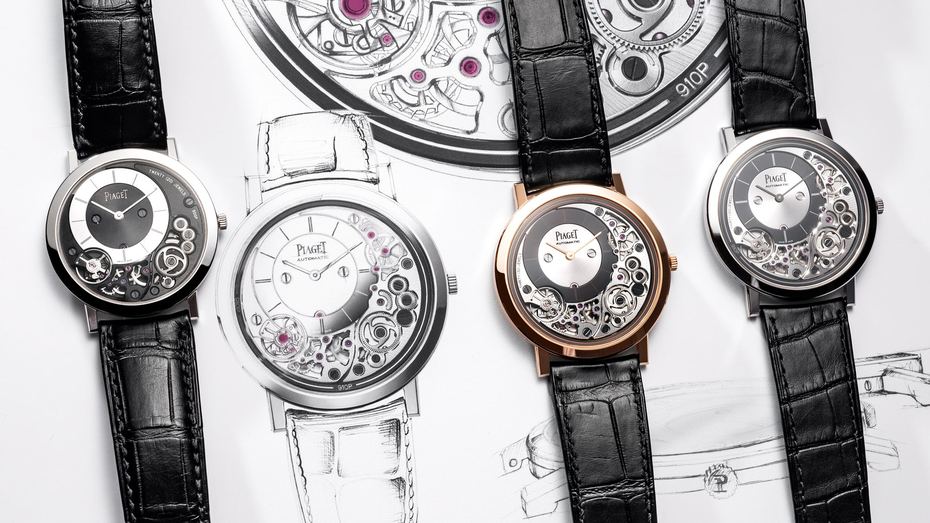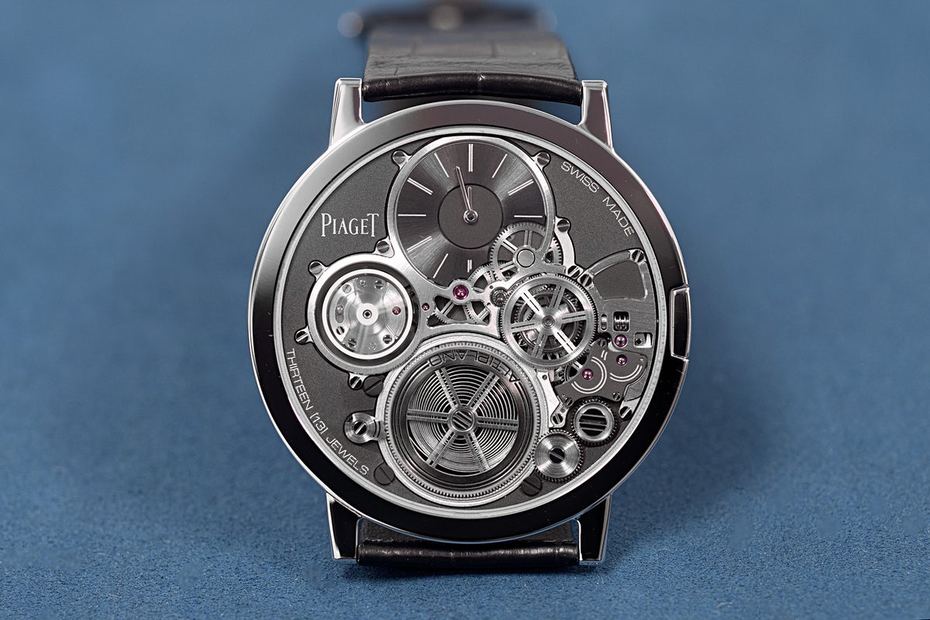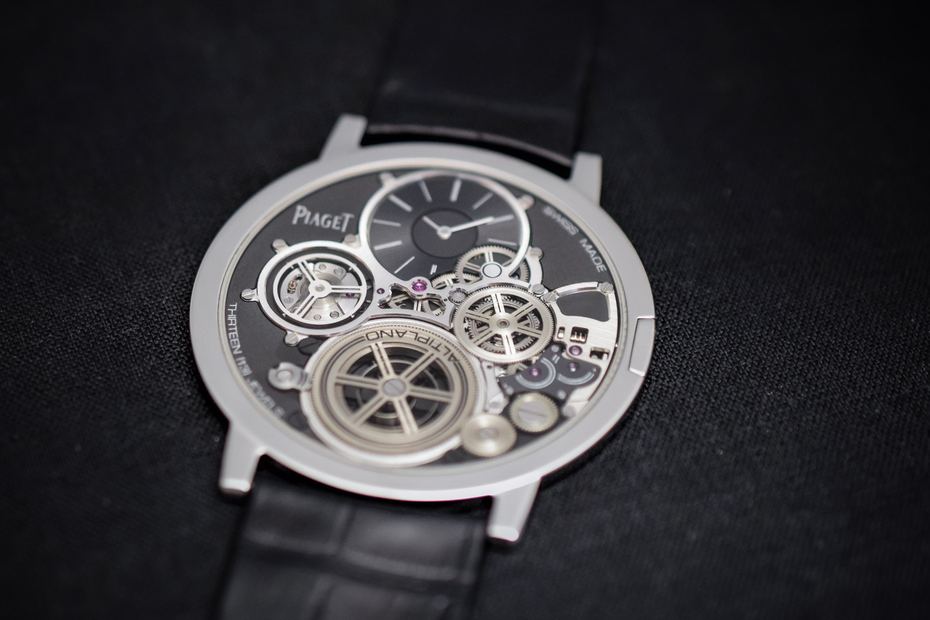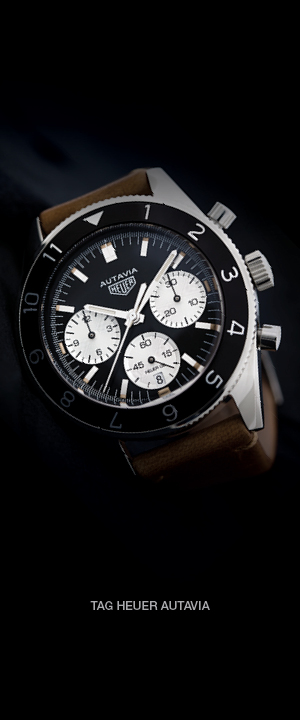Swiss watchmaker sets another ultra thin record based on the concept that led to the 900P
Bulgari’s claim on the world’s thinnest automatic watch – the GPHG-winning Octo Finissimo Automatic – didn’t last for long. It held ultra thin bragging rights for just eight months before we were shown a working example of its successor by none other than Piaget.
Piaget of course has a historical connection with ultra thin watchmaking, having developed the barely-there 9P handwound movement (2mm) in 1957 and the 12P automatic movement (2.35mm) in 1960. The maison has produced some 25 ultra thin movements since then.

Its latest record-breaker, the Altiplano Ultimate Automatic 910P, is the next logical advancement upon a previous record-breaker the 900P. That model earned its place in the pantheon of slim watches with the revolutionary trick of doing away with the standard mainplate and bridge ‘Lepine’ architecture set down by watchmaker Jean-Antoine Lepine in the 18th Century. Instead Piaget built the movement directly into the caseback creating a watch just 3.65mm thick. When it comes to Piaget’s 9xxP approach it’s impossible to talk about movement and case thicknesses separately as the two elements have been merged into one.
But while the 900p is a manually wound movement, the 910P is an automatic. Piaget – which celebrates the 60th anniversary of the Altiplano collection this year – achieved this by using a peripheral rotor (in black PVD coated 22ct gold), which adds more to the watch’s diameter than it does its depth.

Piaget also adopted this ‘single plane’ ethos when it came to placing the minute and hour wheel, which here sit within the movement rather the regular arrangement of sitting on top of it. Piaget is seeking a patent for this approach.
Savings have also been found by simply making components slimmer, with certain wheels just 0.12mm thick compared to a more common 0.2mm. Bridges, here mounted from the dial side, also serve to protect the hands and movement from coming into contact with the sapphire crystal glass when it flexes, something unavoidable when dealing with ultra thin watches.

Two versions have been created, in 18ct pink gold and 18ct white gold. If you’re familiar with the 900P then you’ll instantly recognise the 910P with its offset main dial for minutes and hours and crescent moon arrangement of movement wheels visible on the dial. The only difference is the thin peripheral rotor framing it all, the motion of which would be all but camouflaged by its black coating were it not for a thin gold pinstripe and the model’s designation at the six o’clock.
While the 900P has a diameter of 38mm and a thickness of 3.65mm, the 910P is 41mm in diameter and 4.3mm thick. By way of comparison, the Bulgari is 5.15mm. Historically these ultra thin records have advanced in slivers a few hundredths of a millimeter thick, so for the record to be beaten by 0.85mm, the 910P certainly represents a milestone achievement for Piaget, even if it is one we’ve been expecting since the 900P came out three years ago.
This article was first published on Salon QP
Richard Mille and McLaren wave the flag on their first collaborative timepiece — the RM 11-03 Automatic Flyback Chronograph.


Discussion